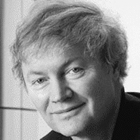|
|
|
|
|
|
 |
| INVITED |
|
 |
| . |
|
|
Antonio Agresti
Università degli Studi di Roma “Tor Vergata”, Italy
Invited – Plenary Session
Antonio Agresti is an Assistant Professor at the Department of Electronic Engineering at the University of Rome Tor Vergata since 2019. His research activity mainly involves the design, engineering, fabrication, and electrical/spectroscopic characterization of hybrid and organic solar cells, and the use of graphene and transition metal dichalcogenides and emerging two-dimensional materials such as MXenes for perovskite solar cells, tandem devices, large-area modules, and panels. He has authored/coauthored more than 50 publications and has participated as an invited speaker to several conferences in the renewable energy field. He is currently the deputy leader of Horizon 2020 Spearhead 5—Graphene Core 3 project.
|
|
|
|
|
 |
| INVITED |
|
 |
| . |
|
|
Sebastiano Bellani
BeDimensional, Italy
Invited – Plenary Session
Sebastiano Bellani is researcher of BeDimensional Spa. He received his Ph.D. from Politecnico di Milano, while working at Instituto Italiano di Tecnologia. Here, he investigated solid/liquid interfaces in organic semiconductor water-gated organic field-effect transistors, hybrid organic-inorganic photoelectrochemical cells and biopolymer-based devices for optical cellular stimulation. Currently, he is participating at the European Commission's Future and Emerging Technology Graphene Flagship. He is deputy leader of Graphene Flagship's Solar Farm Spearhead Project. His current studies are focusing on chemical-physical, spectroscopic and photoelectrochemical characterizations of solution-processed two-dimensional materials and their energy-related applications, including photovoltaics, (photo)electrocatalysis and energy storage systems.
|
|
|
|
|
 |
| INVITED |
|
 |
| . |
|
|
Piotr Cegielski
AMO GmbH, Germany
Invited – Plenary Session
Piotr Cegielski is a senior scientist at AMO GmbH. He is active in the field of silicon photonics with focus on integration of light sources into silicon (nitride) photonic circuits, especially using halide perovskites. He received his joint Master Degree in Nanotechnology from KU Leuven (Belgium) and Chalmers University of Technology in Sweden in 2015. Afterwards he joined AMO GmbH as a Marie Skłodowska-Curie Early Stage Researcher and received his Ph.D. degree from RWTH Aachen University in 2019.
|
|
|
|
|
 |
| KEYNOTE |
|
 |
| . |
|
|
Stefaan De Wolf
KAUST, Saudi Arabia
Keynote – Plenary Session
Stefaan De Wolf received his Ph.D. degree in 2005 from the Katholieke Universiteit Leuven in Belgium, during which time he was also affiliated with imec in Belgium, working on crystalline silicon solar cells. From 2005 to 2008, he was with the National Institute of Advanced Industrial Science and Technology (AIST), Tsukuba, Japan. In 2008, he joined the Photovoltaics and Thin-Film Electronics Laboratory, Ecole Polytechnique Federale de Lausanne (EPFL), Neuchatel, Switzerland, as a team leader working on high-efficiency solar cells. Since September 2016 he is an associate professor at the King Abdullah University of Science and Technology (KAUST) in Saudi Arabia, working on high-efficiency silicon and perovskite solar cells, and combinations thereof.
|
|
|
|
|
 |
| PLENARY |
|
 |
| . |
|
|
Michael Graetzel
EPFL, Switzerland
Plenary Talk
Professor of Physical Chemistry at the Ecole polytechnique fédérale de Lausanne (EPFL) Michael Graetzel, PhD, directs there the Laboratory of Photonics and Interfaces. He pioneered research on energy and electron transfer reactions in mesoscopic systems and their use to generate electricity and fuels from sunlight. He invented mesoscopic injection solar cells, one key embodiment of which is the dye-sensitized solar cell (DSC). DSCs are meanwhile commercially produced at the multi-MW-scale and created a number of new applications in particular as lightweight power supplies for portable electronic devices and in building integrated photovoltaics. They engendered perovskite solar cells (PSCs) which turned into the most exciting break-through in the history of photovoltaics. He received a number of prestigious awards, of which the most recent ones include the RusNANO Prize, the Zewail Prize in Molecular Science, the Global Energy Prize, the Millennium Technology Grand Prize, the Marcel Benoist Prize, the King Faisal International Science Prize, the Einstein World Award of Science and the Balzan Prize. He is a Fellow of several learned societies and holds eleven honorary doctor’s degrees from European and Asian Universities. His over 1500 publications have received some 220’000 citations with an h-factor of 218 (SI-Web of Science) demonstrating the strong impact of his scientific work.
|
|
|
|
|
 |
| KEYNOTE |
|
 |
| . |
|
|
Giulia Grancini
Università degli studi di Pavia, Italy
Keynote – Plenary Session
|
|
|
|
|
 |
| INVITED |
|
 |
| . |
|
|
George Kakavelakis
University of Cambridge / CGC, UK
Invited – Plenary Session
Dr George Kakavelakis obtained his PhD degree as an IKY/Siemens Scholar of Excellence from the Department of Materials Science and Technology of the University of Crete, Greece in July 2018. His work was focused on the improvement of performance and stability of solution processed photovoltaics through novel interfacial engineering designs. In September 2018 he took a postdoctoral research associate appointment in the Cambridge Graphene Centre of Cambridge University to develop fully printed carbon electrode based solar photovoltaics. In April 2020 he has been elected Junior Research Fellow under the academic title B1 at Wolfson College of Cambridge University. In September 2021 he joined the Laboratory of Photonics and Interfaces at École polytechnique fédérale de Lausanne as Marie-Sklodowska Curie Individual Fellow.
|
|
|
|
|
 |
| KEYNOTE |
|
 |
| . |
|
|
Shengzhong Liu
Shaanxi Normal University, China
Keynote – Plenary Session
Prof. Shengzhong (Frank) Liu is the team lead for the DNL16 Thin Film Solar Cell group. He is a Professor at Dalian Institute of Chemical Physics, Chinese Academy of Sciences. , he is also a professor at Shaanxi Normal University – one of top 100 universities in China. Dr. Liu received his Ph. D. degree from Northwestern University, Evanston, Illinois, USA in 1992. He then conducted his postdoctoral research at Argonne National Laboratory. He has dedicated his research in thin film photovoltaics since 1998 when he worked for Solarex (later BP Solar). He moved to United Solar Ovonic in 2003 when BP Solar closed its thin film PV business. He has been one of the world pioneers in this field. His major achievements include
|
|
|
|
|
 |
| KEYNOTE |
|
 |
| . |
|
|
Wanyi Nie
Los Alamos National Laboratory, USA
Keynote – Plenary Session
Wanyi Nie is a staff scientist at Los Alamos National Laboratory. Her research interests include developing novel semiconductors for onto-electronic devices; understanding the carrier transport properties in perovskite semiconductors. She is currently leading a team developing perovskite based LEDs and radiation detectors.
|
|
|
|
|
 |
| INVITED |
|
 |
| . |
|
|
Hanna Pazniak
University of Duisburg-Essen, Germany
Invited – Plenary Session
Hanna Pazniak is a graduate of Belarusian State Technological University in inorganic chemistry. Her research interests are layered materials with focus on transition metal carbides/nitrides (MAX phases) and their transition to their two-dimensional counterparts MXenes. She is an expert in high temperature synthesis and development of layered nanoscale systems and their comprehensive characterization by means of Raman, TEM/EELS, XRD, SEM/AFM techniques, as well as their exploitation for applications in perovskite solar cells and gas sensors. Her comprehensive expertise in these fields originates from multiple research projects, in part under her supervision, at TEXAS A&M UNIVERSITY (USA), NATIONAL UNIVERSITY OF SCIENCE AND TECHNOLOGY «MISiS» (Russia), and INSTITUT PPRIME - UNIVERSITE de POITIERS (France). She is currently working as a postdoctoral researcher at University of Duisburg-Essen (Germany).
|
|
|
|
|
 |
| INVITED |
|
 |
| . |
|
|
Ferry Prins
UAM / IFIMAC, Spain
Invited – Plenary Session
Ferry Prins is a tenure-track group leader at the Condensed Matter Physics Center (IFIMAC) at the Universidad Autonoma de Madrid. He obtained an MSc in Chemistry from Leiden University in 2007 and a PhD in Physics from Delft University of Technology in 2011. After postdoctoral stays at Massachusetts Institute of Technology and ETH Zurich, he joined the Universidad Autonoma de Madrid in 2017 where he founded the Photonic Nanomaterials and Devices Laboratory. His lab specialises in the development of Transient Microscopy techniques for the direct visualisation of excited-state transport in nanostructured semiconductors.
|
|
|
|
|
 |
| KEYNOTE |
|
 |
| . |
|
|
Barry P. Rand
Princeton University, USA
Keynote – Plenary Session
Barry Rand earned a BE in electrical engineering from The Cooper Union in 2001. Then he received MA and PhD degrees in electrical engineering from Princeton University, in 2003 and 2007, respectively. From 2007 to 2013, he was at imec in Leuven, Belgium, ultimately as a principal scientist, researching the understanding, optimization, and manufacturability of thin-film solar cells. Since 2013, he is in the Department of Electrical Engineering and Andlinger Center for Energy and the Environment at Princeton University, currently as an Associate Professor. Prof. Rand's research interests highlight the border between electrical engineering, materials science, chemistry, and applied physics, covering electronic and optoelectronic thin-films and devices. He has authored approximately 125 refereed journal publications, has 20 issued US patents, and has received the 3M Nontenured Faculty Award (2014), DuPont Young Professor Award (2015), DARPA Young Faculty Award (2015), and ONR Young Investigator Program Award (2016).
|
|
|
|
|
 |
| INVITED |
|
 |
| . |
|
|
Danila Saranin
NUST MISIS, Russia
Invited – Plenary Session
|
|
|
|
|
 |
| INVITED |
|
 |
| . |
|
|
Byungha Shin
KAIST, Korea
Invited – Plenary Session
Byungha received his BSE in MSE from Seoul National University in 2000, and his M.S. from the University of Michigan in July 2002. His Master's Paper was entitled, "Nanometer-scale Studies of Phase Separation and Clustering in Compound Semiconductor Alloys". He then moved to Harvard University and obtained his PhD in Applied Physics in Jan 2007. From May 2007 to March 2010, he was a post-doc in the department of MSE at Stanford University. From May 2010 to Feb 2013, he worked at IBM T. J. Watson Research Center as s post-doctoral research and a Research Staff Member. He is currently an Assistant Professor in the department of Materials Science and Engineering at Korea Advanced Institute of Science and Technology (KAIST) in Daejeon, Korea.
|
|
|
|
|
| |
|
|
|
|
|
|
|
© Phantoms Foundation 2021 |
|
|
|